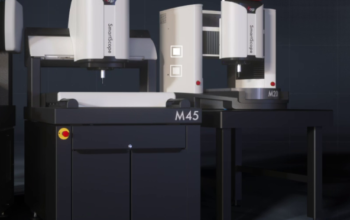Automation has a strong relation to metrology. It focuses on the data collection side of the quality equation. Putting sensors on robots to monitor in real-time was just one area where automation could be deployed to benefit the manufacturing plant. Now with the full arrival of Industry 4.0 through machine learning, automation does not only have to be reserved for data collection, it can also be used for data analysis. Engineers in modern manufacturing facilities can rely on advanced analytical tools to send them the answer, eliminating the time it takes to solve the process variation puzzle manually.
The large amounts of data available in modern, connected factories help engineers keep their processes stable and in control, but there is a time cost associated with managing that data. The time it takes to figure out what database to pull data from, time to pull reports, and the time to analyze and compare everything adds up quickly. The time spent only grows if the problem gets more involved. This time is critical, especially if a process issue or production stoppage is the reason the engineer started the data mining and analysis work to begin with.
Every minute of data mining and analysis could be one minute of lost production which equals lost profit. Some companies even track a metric called Non-Value-Added Activity (NVAA) which is the amount of time dedicated to work done that does not produce parts. An argument can be made that all the time mining and analyzing process data can be put directly in the NVAA cost bucket. However, without data, how can an engineer know where to start to fix a production issue?
The solution is to leverage machine learning to complete the analysis in real-time, and provide answers, not just data, to the engineer. Utilizing tools that enable aggregation of information, visibility without excessive keystroking or mouse clicking, and the answer, instead of just a report, will shorten time to root cause, reduce NVAA, and ultimately reduce loss.
Machine learning and plant floor analytics
As the connected factory grows and joins the internet of things (IoT), it has become possible to apply technology to eliminate the time associated with traditional data acquisition and analysis. Machine learning can be used to create a comprehensive set of rules that automate the analysis, creation of charts, and can send the information directly to the correct person to fix the issue. Think of it as a dimensional engineer in a box.
Improvements in other technologies that enable continuous real-time analytics powered by machine learning are more affordable and available to the factory floor than ever before. Lower-priced data storage, increased connectivity of machines, and high-speed computing are also catalysts for this change in manufacturing. Now instead of pushing alerts and charts, the software can push answers through email clients, text messages and even smartphone mobile apps, enabling engineers to spend their time fixing issues instead of analyzing data.
Providing an intelligent IT automation platform that analyzes the process data that is collected, and sends answers creates efficiency on the plant floor, where effort can be transitioned from data collection and analysis to fixing issues at a controlled and manageable pace, instead of reacting to production losses in a frenetic and unpredictable fashion. For example, Perceptron’s software product, Argus, provides engineers 3-D visuals of product build issues, not just charts. answers, not just charts. The software uses traditional, time-tested tools like statistical process control (SPC) and robust real-time metrology data combined with high speed computing, powerful algorithms, and artificial intelligence to enable a truly proactive approach to process management.
Challenges of proactive process control
Enabling proactive control does have its challenges. One of the first things that needs to be addressed is getting the plant personnel to trust the answers coming from the system without having to rely on their own ability to interpret the data. This new paradigm can make engineers and front-line personnel feel like they are not providing as much value without using their know-how to analyze the data. However, these skilled workers can now pivot from data collectors and analyzers to process improvement specialists. These newly empowered and informed personnel can focus on taking the answers to the plant floor to make immediate improvements to their tooling that can be immediately validated with their in-line gauges and automated analytics. The potential for continuous process improvement and world-class quality is limitless.
Next steps
The ability to harness machine learning for proactive process control is already here. Once the right technology is identified and deployed, all it takes is a change in a plant’s culture to fully leverage the efficiencies created by machine learning and automated process control.









